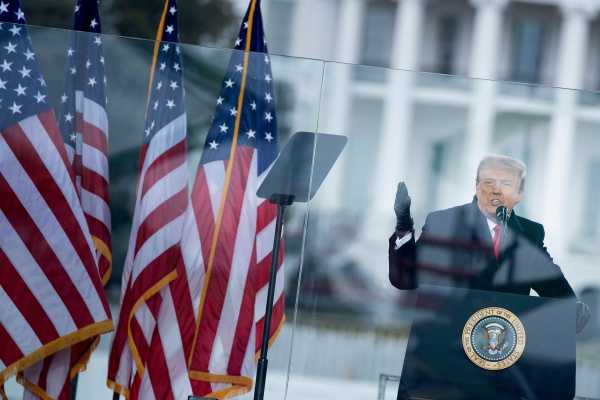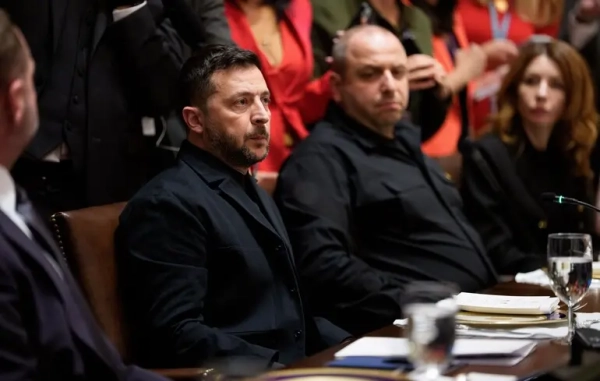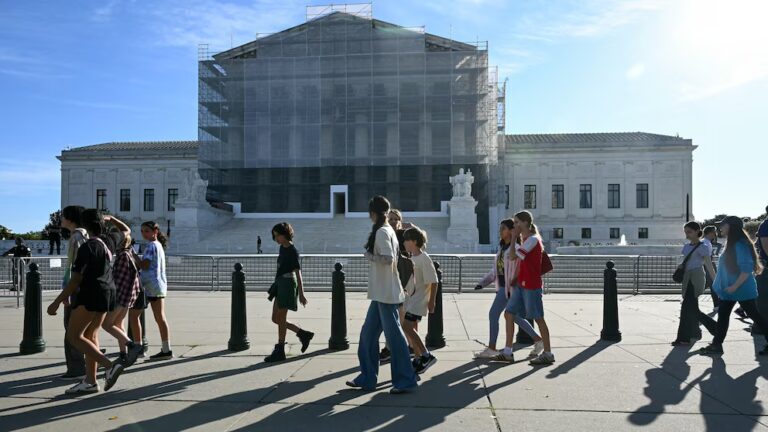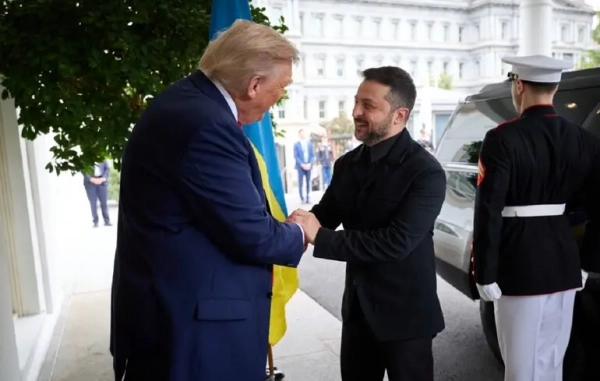
Andrew Prokop is a senior politics correspondent at Vox, covering the White House, elections, and political scandals and investigations. He’s worked at Vox since the site’s launch in 2014, and before that, he worked as a research assistant at the New Yorker’s Washington, DC, bureau.
The January 6 committee released an executive summary of its final report Monday, and it makes the case against Donald Trump.
The committee argues that the former president not only bears responsibility for the storming of the Capitol on January 6, 2021, but that his effort to overturn the presidential election was incredibly extensive, corrupt, and illegal.
Much of the summary’s most relevant evidence and testimony has already been spotlighted at earlier committee hearings. So rather than dropping new bombshells, the executive summary is an aggregate of everything that has come before. (The full report is expected to be released later this week.)
The committee presents the most comprehensive effort to make the case against Trump we’ve seen so far, with much more evidence about, and understanding of, what actually happened than Congress had back when the House impeached Trump for these events days after they transpired.
The old narrative was: after the election, Trump — either deliberately lying or lost in a web of conspiracies pushed by like-minded sycophants — unleashed various corrupt, long-shot, shambolic efforts to overturn Joe Biden’s win, all of which failed. His supporters took him seriously and stormed the Capitol because of his falsehoods. It wasn’t clear Trump anticipated this violence, but his irresponsible conduct meant he was to blame for it.
The committee’s new narrative is: from election night up until January 6, Trump and his associates conspired in an extensive, serious, multi-pronged criminal effort to keep him in power. He knowingly spread lies about election fraud, pressured federal and state officials to corruptly join the scheme, and enlisted his supporters to pressure Congress on January 6, while being well aware violence could be the end result — as it was.
The latest version of events reads a lot more like a prosecutorial brief, and, in a sense, it is one — committee members voted Monday to recommend Trump’s referral for prosecution by the Justice Department. They argued he likely committed four crimes: obstruction of an official proceeding, conspiracy to defraud the United States, conspiracy to make a false statement, and assisting an insurrection. (Helpfully, a federal judge, David Carter, already ruled months ago that evidence suggests Trump committed some of these crimes, and the committee cites his analysis.)
The referral will mean little in practice, because the DOJ has long been investigating these matters on its own, with special counsel Jack Smith now in charge of that probe. But reading the executive summary gives a sense of what some future prosecutor like Smith might say if an indictment of Trump does proceed.
The case against Trump: planning, premeditation, and knowing prevarication
When the nation watched Trump’s attempt to stay in power unfold in real time, it often seemed faintly comical. Unhinged figures like Rudy Giuliani, Sidney Powell, and pillow salesman Mike Lindell played starring roles spreading utter nonsense as establishment Republicans tried to avert their eyes. Judges constantly threw Trump’s lawsuits out of court, and GOP state officials refused to act on his behalf. Fiascos like Giuliani’s Four Seasons Total Landscaping press conference ensued.
True, matters like GOP officials’ flirtations with blocking the certification of state results and Trump’s effort to pressure Georgia’s secretary of state to “find” the exact amount of votes he needed seemed concerning, but they quickly failed. Until the Capitol was stormed on January 6, Trump’s effort, as maliciously intentioned as it may have been, did seem faintly pathetic in some ways.
But the committee’s investigation and the executive summary of its report put forward a very different interpretation of events. Rather than flailing and silly, they argue that Trump was deadly serious all along. They say his conduct was generally part of a larger plan. They say there’s some evidence it was premeditated. And they don’t buy the argument that Trump may have believed his own lies — they say he was knowingly prevaricating.
First, the committee argues that when you look at Trump’s conduct after the election in totality, it does look like a larger plan. Early in the executive summary, the committee lists among its key findings that Trump:
- Spread false allegations of fraud related to the 2020 election
- Plotted to overturn the outcome of the election
- Corruptly pressured Vice President Mike Pence, US Justice Department officials, state officials and legislators, and members of Congress to help him overturn the election
- Oversaw an effort to send fake electoral certificates to Congress
- Submitted and verified false information as part of his court challenges to the outcome
- Summoned thousands of his supporters to Washington, inflamed them on January 6, and then delayed intervening to rein them in once many of them stormed the Capitol
All this, the executive summary asserts, amounts to a “multi-part conspiracy to overturn the lawful results of the 2020 Presidential election.” That is: this wasn’t ordinary politics, it was a criminal conspiracy.
The committee also lays out which officials or Trump allies were involved in all of these parts of the plan, focusing especially on Trump’s effort to pressure Pence into discarding electoral votes for states Biden won, and on his consideration of putting a crony in charge of the Justice Department who was willing to declare the department believed some election results may have been fraudulent.
Second, the committee argues that Trump’s decision to falsely declare victory on election night was “premeditated.” They cite evidence that Tom Fitton of the conservative group Judicial Watch advised Trump to do this days before the election, and that outside allies like Steve Bannon and Roger Stone predicted Trump would do this. (Speculation that Trump would do this was also widespread in the media.)
The committee even suggests Trump understood that the violence that unfolded on January 6 could well happen — and that the violence that occurred may have been, to a degree, premeditated as well.
A key witness, former White House staffer Cassidy Hutchinson, described how Trump tried to get Secret Service agents to let more of his supporters into his rally that day even though they had weapons. Hutchinson said Trump said something like, “I don’t f’ing care that they have weapons. They’re not here to hurt me,” and that he added, “They can march to the Capitol from here.” Hutchinson’s testimony also suggested Trump really did intend to go to the Capitol himself that day, but it remains unclear what exactly he wanted to do there.
Third, there’s the issue of prevarication. The committee argues Trump was not just mistakenly believing conspiracy theories about election fraud, but was rather “purposely and maliciously” lying to the public. One striking table in the executive summary lists 18 incidents in which Trump was privately informed a specific claim he was making about election fraud was false, only for Trump to subsequently repeat that false claim in public. These include claims about thousands of dead people voting in Georgia, “rigged” voting machines, and reported malfeasance at vote count sites. Again and again, he was told these claims were inaccurate, but he just kept making them.

Whether Trump was knowingly lying in claiming election fraud is an important question to sort out, because it gets to the question of his intent and has implications for the strength of criminal charges against him. If Trump knew he was lying as he made his false claims, that could help any future prosecutors make their case. The committee again and again takes the position that their evidence supports the view these were knowing, deliberate lies.
Still, the ultimate decision about whether Trump’s conduct amounted to criminality will be left to special counsel Jack Smith and his boss, Attorney General Merrick Garland. Over the course of the year, this investigation has seemed to grow increasingly serious, with dozens of close Trump associates facing subpoenas and testifying. The January 6 committee has succeeded at shifting many people’s understanding of what happened, but the Justice Department will decide whether Trump will face consequences for it.
Sourse: vox.com






